Coping With Freeze Damage
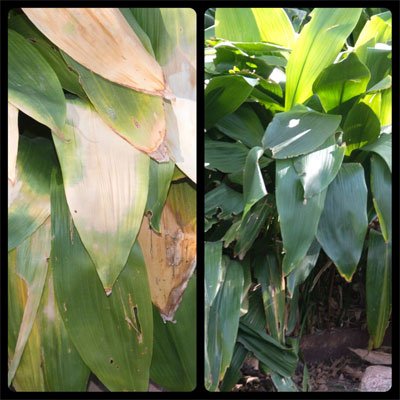
Aspidistra that was exposed to this winter’s cold will have to be trimmed to remove damaged leaves. Plants on right are just fine. Same landscape.
I assess damage in my own plants slowly and cautiously. Here are the steps I follow.
When I first realize a plant has been damaged, I consider the species. In the fall, when I see coleus or basil (two very sensitive plant types) with damage, I know that it’s time to remove them.
By comparison, with woody plants that have been hurt during the winter, I normally wait until early spring to make my diagnoses. That time is here now, and for the next couple of weeks, you’ll want to watch your plants closely.
If stems are shriveled and brown, at least that browned portion of the plant is dead and can be pruned away. However, if you come to living stem tissue as you trim a frozen shrub back, stop pruning immediately.
You may already be seeing new leaves emerge up and down the stems of freeze-damaged plants. If that’s the case, just sit tight and see how things play out. You may have some minor reshaping to do, but those are good signs that the plants will be fine.
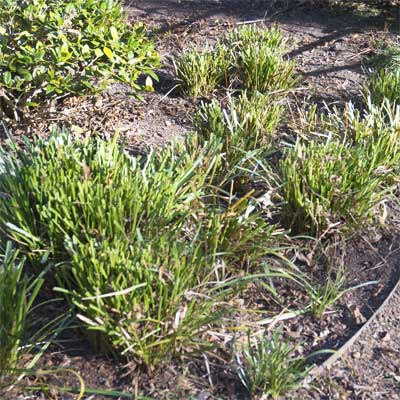
Liriope has been gently trimmed to remove winter damage.
Of course, for plants like liriope, mondograss, pampasgrass, cast iron plant (aspidistra) and others that have no definable stems, you can trim away anything that is browned. In fact, you could have done that as soon as you saw the browning during the winter. It’s very important when pruning pampasgrass and liriope, that you not wait until new leaves are emerging up through the dead leaves. Do not cut across new blades. If you do, you’ll be looking at ragged ends for the rest of the growing season.

Mondograss is being mowed very high to remove winter stubble, even up surface of the bed.
If you still have shade trees that are suffering from broken branches from the November ice storm, tend to them immediately. Those limbs were likely weakened by the damage, so it probably won’t be a task you’ll want to assume on your own. Hire a certified arborist who knows how to navigate through the compromised branches. The arborists are almost caught up with the rush, so get on their docket now.
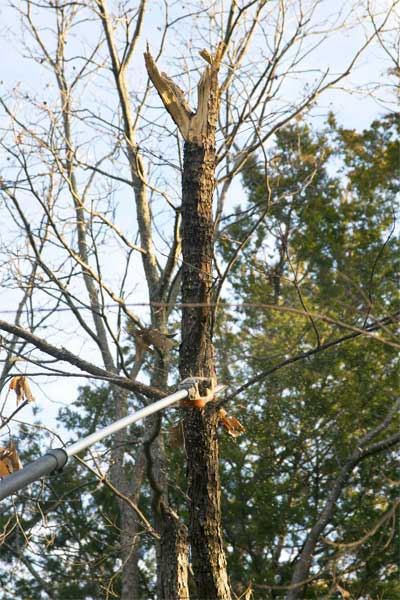
Pole chain saw is being used to remove stub of a broken limb (from ice storm earlier this winter) in Lacey oak.
Finally, in terms of avoiding similar damage in future years, you may want to reexamine and compare your own locale’s listings in the USDA Plant Hardiness Zone Maps of 2012 and 1990.
Through data gathered by the United States Department of Agriculture and, most recently, with the assistance of Oregon State University, maps were created showing the minimum temperatures that might be expected in each county in the U.S. each winter. The map is a work in progress, as it is always subject to change as new weather records come in.
You’ll notice that the boundaries of some of the Zones were shifted northward by several counties from the 1990 map to the 2012 version.
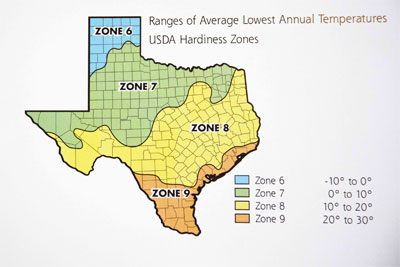
1990 USDA Zone Hardiness Map
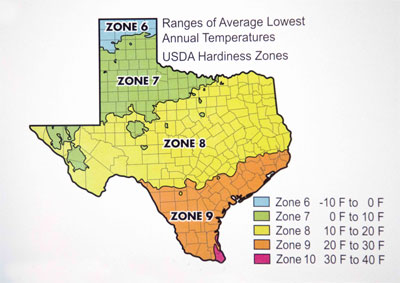
2012 USDA Zone Hardiness Map
It’s just one guy’s personal opinion, but those 22 years from 1990 until 2012 included many very warm winters, and because the data have only been collected since the 1930s, those warm winters may have skewed the figures. They were a big portion of a relatively small sampling size.
So here is my Garden Tip:
If you live near the northern edge of one of the Hardiness Zones on the 2012 map, compare where you were in 1990. You may want to think twice about choosing plants that are barely hardy in your area under the 2012 ratings. All it would take would be one “old-style” winter to send marginal plants to the compost. And 2013-14 may have been one of those winters.

